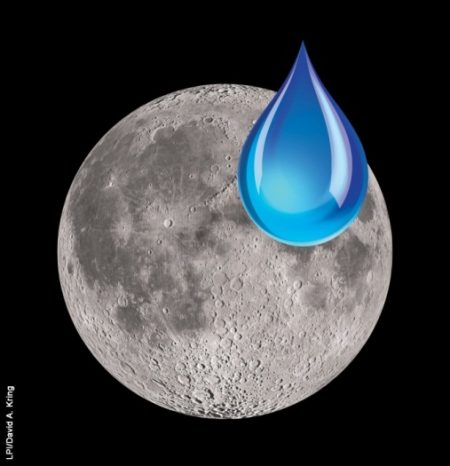

The rising water vapour would then condense as frost onto the cold plate and “you could scrape it off”, Kaukler says.īaking and processing dry lunar soil at high temperatures could also release oxygen and hydrogen for rocket fuel or other uses.
Moom water full#
On the moon, the vapour could be collected by holding a cold metal plate above the soil. Moon water is basically a type of water which is charged with the energies of the full Moon. The vapour then diffused out from higher-pressure pores in the soil to the low-pressure vacuum above. Keeping the soil in a vacuum to simulate lunar conditions, they found that heating it to just -50 ☌ with microwaves made the water ice sublimate, or transform directly from solid to vapour. They used an ordinary microwave oven to zap simulated lunar soil that had been cooled to moon-like temperatures of -150 ☌. “It’s like building a transcontinental railroad to space.” Cold plateīut how do you extract water that is likely locked up as small concentrations of ice in the lunar soil? Microwaves could provide the key, according to work by Edwin Ethridge of NASA’s Marshall Space Flight Center and William Kaukler of the University of Alabama, both in Huntsville, who first demonstrated the technique in 2006.

“It completely changes the spaceflight paradigm,” says Paul Spudis of the Lunar and Planetary Institute in Houston, Texas. Because of the moon’s weaker gravity, it would take less energy to loft fuel into space for a Mars mission from the lunar surface than it would from Earth. Rocket fuel produced on the moon might even help mount a human mission to Mars. That would slash launch costs, since it would reduce the amount of fuel they would need to lug with them from Earth. So far, the water does not appear to be very abundant – a baseball-field-sized swathe of lunar soil might yield only “a nice glass of water”, Pieters told New Scientist.īut if it could be harvested, lunar astronauts could use it as drinking water and split it into oxygen and hydrogen to make rocket fuel for their return journeys. Moon water is infused with the energy of the moon, so sun water is (of course) infused with the energy of the sun. “Once it gets in there, it’s not going to come out,” says Carle Pieters of Brown University in Providence, Rhode Island, lead scientist for the NASA-built instrument that made the Chandrayaan-1 measurements. Moon water is super popular these days, but I like making sun water equally as much While it isn’t as well-known, I feel that it’s extremely powerful in its own right. Some researchers think that older ice could have been sourced from water-bearing comets and asteroids hitting the moon, while newer water-ice might come from bombardment from pea-sized micrometeorites.Water delivered by comets or generated by the solar wind could randomly diffuse over time into permanently shadowed craters at the lunar poles, which were recently measured to be colder than Pluto. As well as being mostly neat the Moon’s north and south poles, it’s probably buried under several feet of regolith-Moon dust. However, there is one small problem with recommending future astronauts go looking for old Mon water to drink. In total about 18 quadrillion pounds of volcanic water could have condensed as ice on the Moon. The new research theorizes that about 41% of the water from its volcanoes may have condensed onto the Moon as ice. This new frost theory comes in the wake more evidence that lunar volcanoes may have ejected clouds of mostly carbon monoxide and water vapor, which may have created a thin atmosphere for a short time. “It’s possible that 5 or 10 meters below the surface, you have big sheets of ice,” said Hayne. We’ve know for some time that The moon has water, but the authors of this new research say it could be more substantial than suspected.


 0 kommentar(er)
0 kommentar(er)
